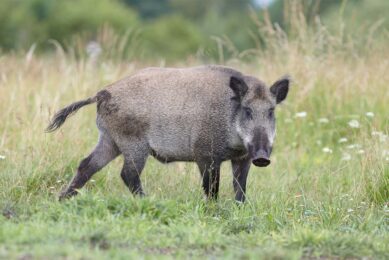Effectiveness of chemical compounds against ASFv

Polish researchers have been testing the effectiveness of a range of chemical compounds against African Swine Fever virus (ASFv).
The team wanted to closer investigate the compounds as cleaning and biosecurity measures are the only tool producers can use against the virus, in absence of a vaccine. The study was carried out by scientists attached to Poland’s National Veterinary Research Institute in Puławy. It was published in the peer-reviewed journal Pathogens.
The substances researched included:
- formaldehyde;
- sodium hypochlorite;
- caustic soda;
- glutaraldehyde;
- phenol;
- benzalkonium chloride;
- potassium peroxymonosulfate; and
- acetic acid
This specific selection was done based on the recommendation by the World Organisation for Animal Health (OIE) and previous disinfectant studies on surfaces.
Most compounds inactivated ASFv
Most of the compounds inactivated the virus, in recommended concentrations, the researchers concluded. In order to reduce the cytotoxicity of the 4 substances, Microspin S-400 HR columns were applied, therefore making it possible to demonstrate 4 logarithms virus titre reduction.
The team wrote: “Sodium hypochlorite, glutaraldehyde, caustic soda and potassium peroxymonosulfate showed the best ASFv inactivation rates, achieving titre reductions over 5 logs. Despite microfiltration, the virucidal activity of formaldehyde was not assessable, due to its high cytotoxicity.”
The researchers emphasied that cleaning is particularly important, because removal of the soiling provides improved effectiveness of the tested chemical compounds
The research paper in Pathogens was authored by Małgorzata Juszkiewicz, Marek Walczak, Natalia Mazur-Panasiuk, Grzegorz Woźniakowski.
 Beheer
Beheer








 WP Admin
WP Admin  Bewerk bericht
Bewerk bericht